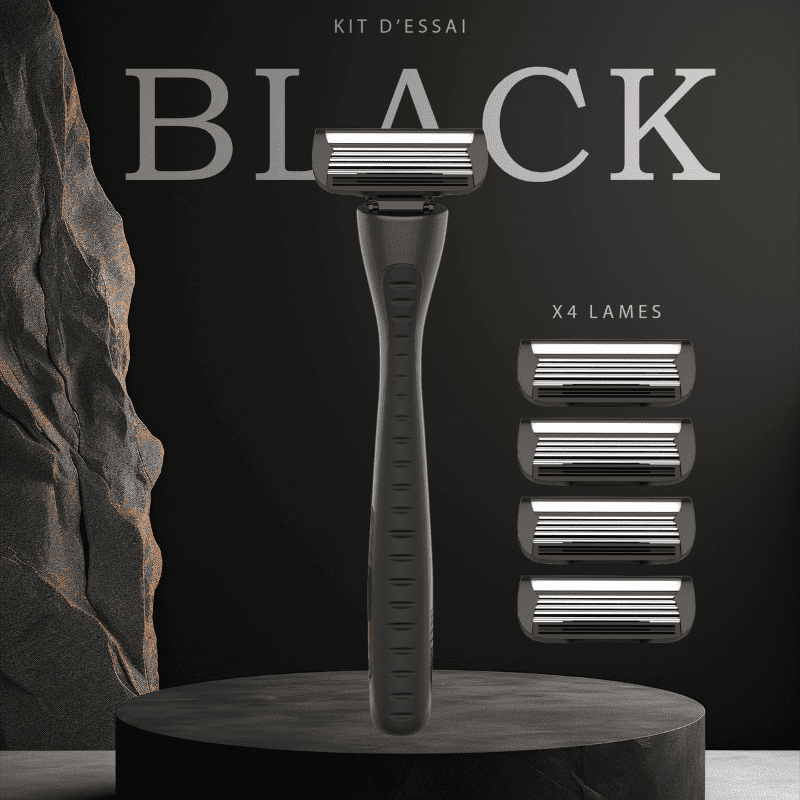Many probably think that all beard hair grows in the same direction, basically downwards. However, if you look closely at the chin and neck areas for example, you will see that not all hairs grow downward. The direction in which your beard hair grows will always be the same throughout your life. So you only have to determine the direction of your hair growth once!
Shave with or against the grain?
At the first pass of the blades, it is essential to shave in the direction of the hair. This first pass alone removes 80% of the hair length. Shaving the first pass against the direction of the hair very often causes ingrown hairs, irritation, and even burns. Indeed, if the hair is long, shaving against the grain could fold it back on itself in its hair bulb, creating an ingrown hair.
After and only after shaving in the direction of the hair, you can shave perpendicular to the direction of the hair, and finally in the opposite direction of the hair. It is recommended to shave against the grain only if you want a close shave or if you have a particularly thick hair. If the hair is still very long even after the first pass in the direction of the hair, do not hesitate to make a second pass with the grain. Remember to reapply soap or cream to your face between each pass of the blades.
How to determine the direction of the hair?
To understand the direction of growth of your different beard hairs, rub your face and neck about 24 hours after shaving. As you run your hands along your skin, areas that seem rough indicate a direction opposite to the direction of hair growth. For example, if you notice that the hair is hard as you run your hands up your cheeks, it means that the rise is the opposite direction of hair growth. It is then better to shave this area from top to bottom, corresponding to the direction of hair growth.
Does the type of razor used matter?
Whether you use a safety razor or a multi-blade razor can play a role. If you use a safety razor, only one blade passes over the hair in each pass. In one pass, a safety razor will tend to leave the hair longer than a multi-blade razor. A multi-blade razor will actually cut the hair several times in one stroke, as several blades pass over the hair. Shaving with a safety razor can therefore lead to making passes in the opposite direction of the hair for a closer shave. However, be careful not to press too hard on the razor hoping to cut more hair; this could shave skin. It's always better to make several light strokes than one hard one.
Prepare sensitive areas for shaving
Properly preparing your skin before shaving is a decisive factor in the quality of your shave. If you're a close shave enthusiast and want to shave against the grain, shaving oil can go a long way in preventing ingrown hairs and other shaving pains. Shaving oil will form a protective barrier on your skin, preventing the blade from directly touching the skin. It also helps prevent ingrown hairs and prevents skin dehydration during shaving. As an added bonus, shaving oil preserves your razor blades longer!


